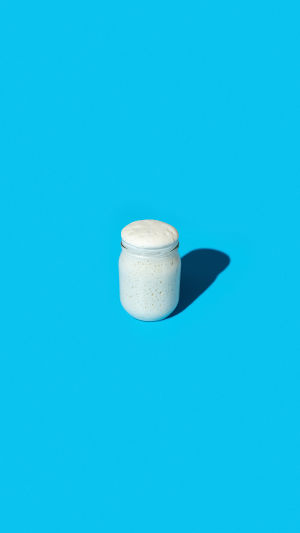A sourdough starter, natural fermentation process, is what gives sourdough bread its distinctive flavor and texture.
Creating and maintaining a sourdough starter is a rewarding endeavor that allows you to bake delicious bread at home.
Let’s dive into the essentials of making and caring for your sourdough starter!
<b>Flour</b>: Use all-purpose flour, whole wheat flour, or a mix. Whole wheat flour tends to foster quicker fermentation due to its higher nutrient content.
<b>Water</b>: Use filtered or bottled water to avoid chlorine, which can inhibit yeast growth.
<b>Container</b>: A glass or plastic container with a loose lid or a cloth to cover it.
<h3>How to Make a Sourdough Starter</h3>
<b>1. Day 1:</b>
Combine 100 grams of flour with 100 grams of water in your container. Mix until there are no dry patches. Cover loosely and let it sit at room temperature (around 70°F or 21°C).
<b>Day 2</b>:
You may or may not see bubbles. Either way, add 100 grams of flour and 100 grams of water. Mix, cover, and let sit.
<b>Day 3</b>:
You should see some bubbles and notice a sour smell. Discard half of the mixture (about 200 grams) and feed it with 100 grams of flour and 100 grams of water. Mix well and cover.
<b>Day 4</b>:
By now, your starter should be bubbly and have doubled in size. Discard half and feed again with 100 grams of flour and 100 grams of water.
<b>Day 5</b>:
Your starter should be quite active and smell pleasantly sour. If it’s doubling in size within 4-6 hours of feeding, it’s ready to use. If not, continue the feeding process for a few more days.
<h3>Maintaining Your Sourdough Starter</h3>
<b>Regular Feeding</b>: If you keep your starter at room temperature, feed it every 12-24 hours. If you refrigerate it, feed it once a week.
<b>Discarding</b>: Use the discarded portion in recipes like pancakes, waffles, or crackers to avoid waste.
<b>Hydration</b>: You can adjust the hydration by using more or less water. A thicker starter (less water) will ferment more slowly, while a wetter starter (more water) ferments faster.
How to Make a Sourdough Starter from Scratch
Video by zoebakes
<h3>Baking with Your Sourdough Starter</h3>
When your starter is bubbly and has a pleasant sour aroma, it’s ready to use in baking. Here’s a simple process to make sourdough bread:
<b>Mix</b>: Combine your starter with flour, water, and salt.
<b>Knead</b>: Knead the dough until smooth and elastic.
<b>Ferment</b>: Let it rise until doubled in size, usually 4-6 hours.
<b>Shape</b>: Shape the dough and let it rest for another hour.
<b>Bake</b>: Preheat your oven and bake your bread until golden brown.
Creating and maintaining a sourdough starter is a fulfilling process that connects you with the art of baking. With patience and care, you’ll have a robust starter that can be used to make delicious, tangy sourdough bread!





